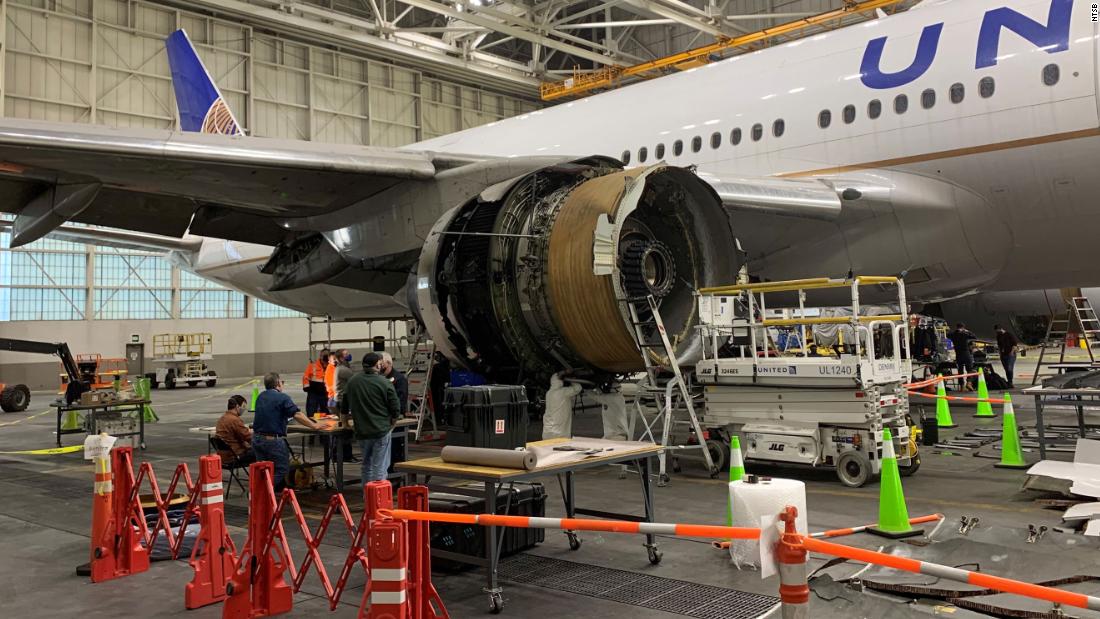The National Transportation Safety Board revealed that the right engine failed minutes after taking off from Denver airport, when the aircraft’s pilots revved their engines “to minimize the expected turbulence time”.
“Immediately after the accelerators were advanced, a loud bang was recorded” in the cabin’s voice recorder.
The new details are part of an update to the NTSB in its ongoing investigation, which typically takes a year or more to complete. The seven pages The report did not draw any conclusions about the cause of the incident nor did it prescribe other measures to be taken by the Federal Aviation Administration, aircraft operators or the engine manufacturer.
A warning light indicated a fire in the engine, according to the update. The pilots followed a fire-fighting procedure and determined that they would not dump fuel to make the aircraft lighter before landing. They concluded that “the magnitude of the overweight fall was not significant enough to make up for other considerations,” said the NTSB.
The report said that a valve that cuts off the flow of fuel to the engine in the event of a fire was properly closed and said “there is no evidence of a fuel-powered fire”. The report cited damage to “fuel, oil and hydraulic lines”.
The NTSB report said that the failed fan blade was inspected using specialized thermoacoustic imaging technology in 2014 and 2016. The inspection looks for small cracks or signs of metal fatigue that may not be visible to the naked eye.
After an engine incident in 2018 on a different plane, the 2016 data was analyzed again, said the NTSB.
The report noted that when the fan blade failed last month, it was less than halfway to the point of requiring another inspection – a detail that CNN previously reported. It operated 2,979 cycles, an approximate measure of how many times the engine was turned on and off. The inspection was necessary after 6,500 cycles.
Days after the February incident, engine manufacturer Pratt & Whitney recommended dramatically reducing the inspection interval to just 1,000 cycles, according to a service bulletin obtained by CNN. The FAA issued an emergency directive requiring the fan blades on the engines to be inspected before flying again.
The inspection interval for this series of engines has been a concern for federal regulators. CNN previously reported that a Federal Aviation Administration review board met a few days before the engine failure in February to consider the need for more regular inspections.
After the engine failure, Boeing recommended suspending the use of 777s with a Pratt & Whitney 4000 engine, and United Airlines has already withdrawn its 777s after the incident. Both the FAA and the NTSB are investigating.
